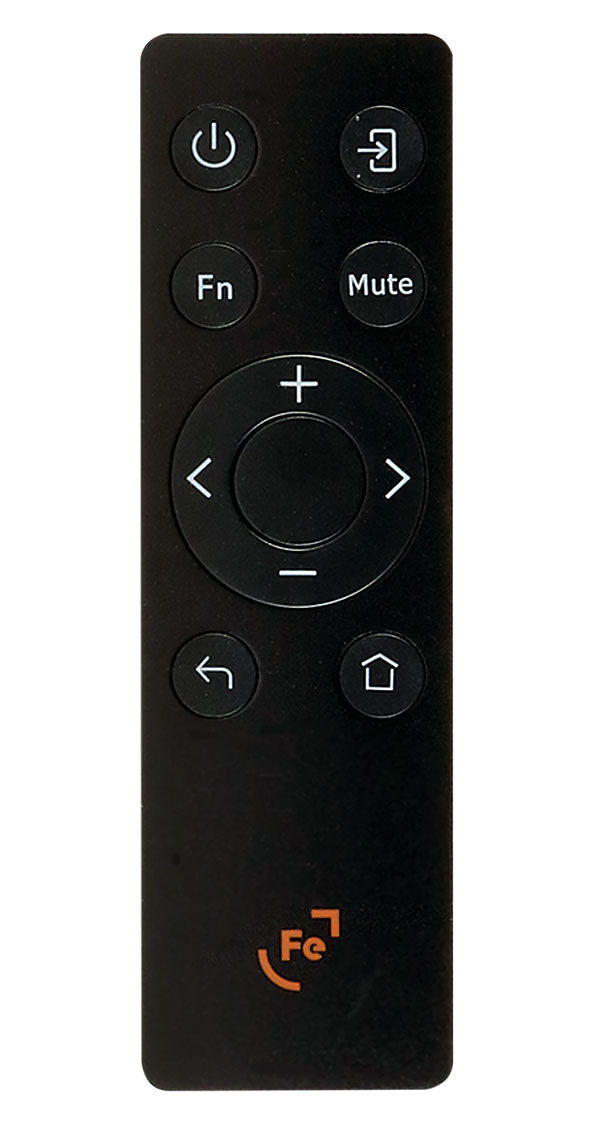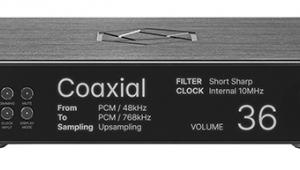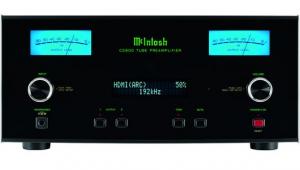Ferrum Audio Wandla USB DAC/Preamplifier Page 2
![]() Making Music
Making Music
I used the Wandla DAC in my full system, feeding a mighty Hegel H590 power amp [HFN Oct '18] connected to Focal Sopra No2 floorstanders [HFN Sep '15], but I was also tempted by the 'Ferrum-themed experience', so did rope in the Hypsos power supply and proven OOR headphone amplifier for some listening. There are synergies to these beyond the neat styling; adding the Hypsos PSU was especially beneficial next to the Wandla's bundled external adapter, improving performance enough to warrant the effort, and cost.
Ferrum's DAC performs admirably, able to extract plenty of information even from 'vanilla' files, and present it all in a believable, musical fashion. With the Wandla connected to my iMac with Roon (the Core running on a separate Mac mini server), Massive Attack's Mezzanine album [Virgin WBRCD4; 44.1kHz/16-bit] made for mellow but insightful listening. And with the source material being CD-quality, it was suited to trying out the oversampling HQPlayer filters the Wandla offers.

Switching between HQ Gaussian and HQ Apodising options on the one hand, and the DAC's three built-in ESS filters on the other, as ever it was more about subtle changes to timbre and the characteristics of high-frequency details. That said, going from the onboard filters to the HQPlayer ones (which are processed not on the DAC chip, but on Ferrum's SERCE board) did expose marked differences.
There's a hint of glare with the ESS offerings, while the HQ filters added coherence and balance to Massive Attack's 'Inertia Creeps' and 'Black Milk'. However, while the difference between the ESS filters (and they're different from each other too) and the HQ filters is pronounced, there's a lot less clear water between the two current HQ options. Maybe the next round of 'Dynamic Digital Filtering' will deliver a more contrasting HQ filter.
Canada's Cowboy Junkies – aka the Timmins family – never seem to run out of steam, releasing their 21st studio album, Such Ferocious Beauty, just days before this issue went to press. Their early Trinity Sessions release [RCA PD88568; 44.1kHz/16-bit] effortlessly stands the test of time, even though it was recorded in only one day on DAT tape in 1988. What makes this classic set enthralling after all these years is not only the finely crafted folk songs, but the acoustics of Toronto's Holy Trinity Church, where they were performed. Ferrum's DAC, through the Focal towers, allowed me to savour it all, the microdetail sonically describing the space on full display.
Above all the music seemed faithfully rendered, although what made it particularly gripping was how I felt submerged in the 'feel' of the surroundings, making the church setting nearly tangible. The Wandla's detailed conversion enhanced the very intimate feel of the recording, particularly with either HQ Gaussian or HQ Apodising enabled, both of which lifted Margo Timmins' voice lightly out of the whole. Also impressive was the smooth quality brought to the dreamy guitar playing of Michael Timmins on 'Blue Moon Revisited'. This was also the point I stopped fiddling around with the filters – the choice was clear.

Probably nobody will ever equal the stature and singing of Nina Simone, but arguably Lady Blackbird's vocal talent comes very close to the Simone standard on Black Acid Soul [Foundation Music 538830160; 44.1kHz/24-bit], and with the first track being Simone's evergreen 'Blackbird' it's easy to see why comparisons are made. Ferrum's premier DAC was up for rendering the late-night, smoky club ambience like it was born to the task. It lapped up the parsimonious arrangements, with only a beautifully rendered piano and a contrabass being gently plucked in the background of most tracks. Not much to work with, but still the Wandla DAC painted a big canvas, with ample space for the vibrating snares to fade out.
Listen Closer
As I wanted to experience the gospel-infused jam halfway through the album's title track in a more close-up manner, I listened to it again through Meze Audio's Rai Penta in-ears, via the OOR amp. With their distinctive tuning favouring fuller basses and more pronounced mids, it showed another side of the Wandla DAC. All the detail and pin-point timing was still there, but through Meze Audio's flagship IEMs the performance became even more natural. It's hard to say what more the Ferrum Wandla could offer at this price. Maybe another filter?
Hi-Fi News Verdict
While the idea of filters 'elected by the online community' is a tad geeky, it's also an attempt to do something original in the busy DAC space. We'll see how far Ferrum takes its 'Dynamic Filter' scheme but, for the time being, the Wandla is a DAC that hits all the right notes. Faulting its technical or sonic performance is not easy as it clearly maintains the momentum of earlier Ferrum products. The brand is on a roll.



















































